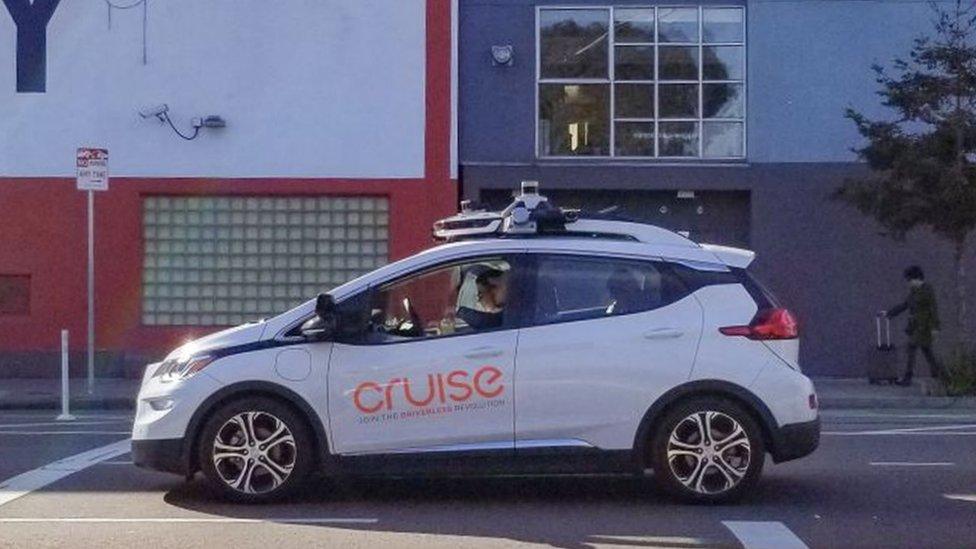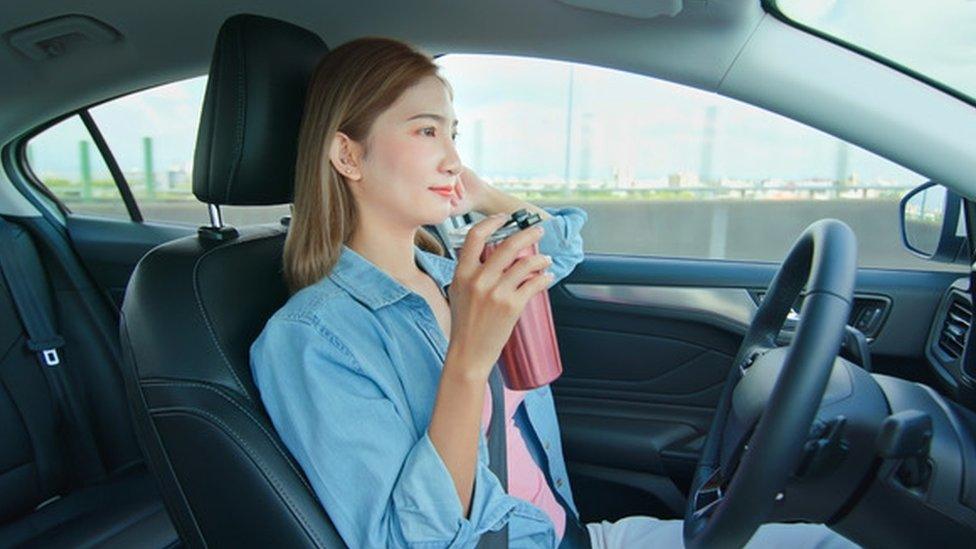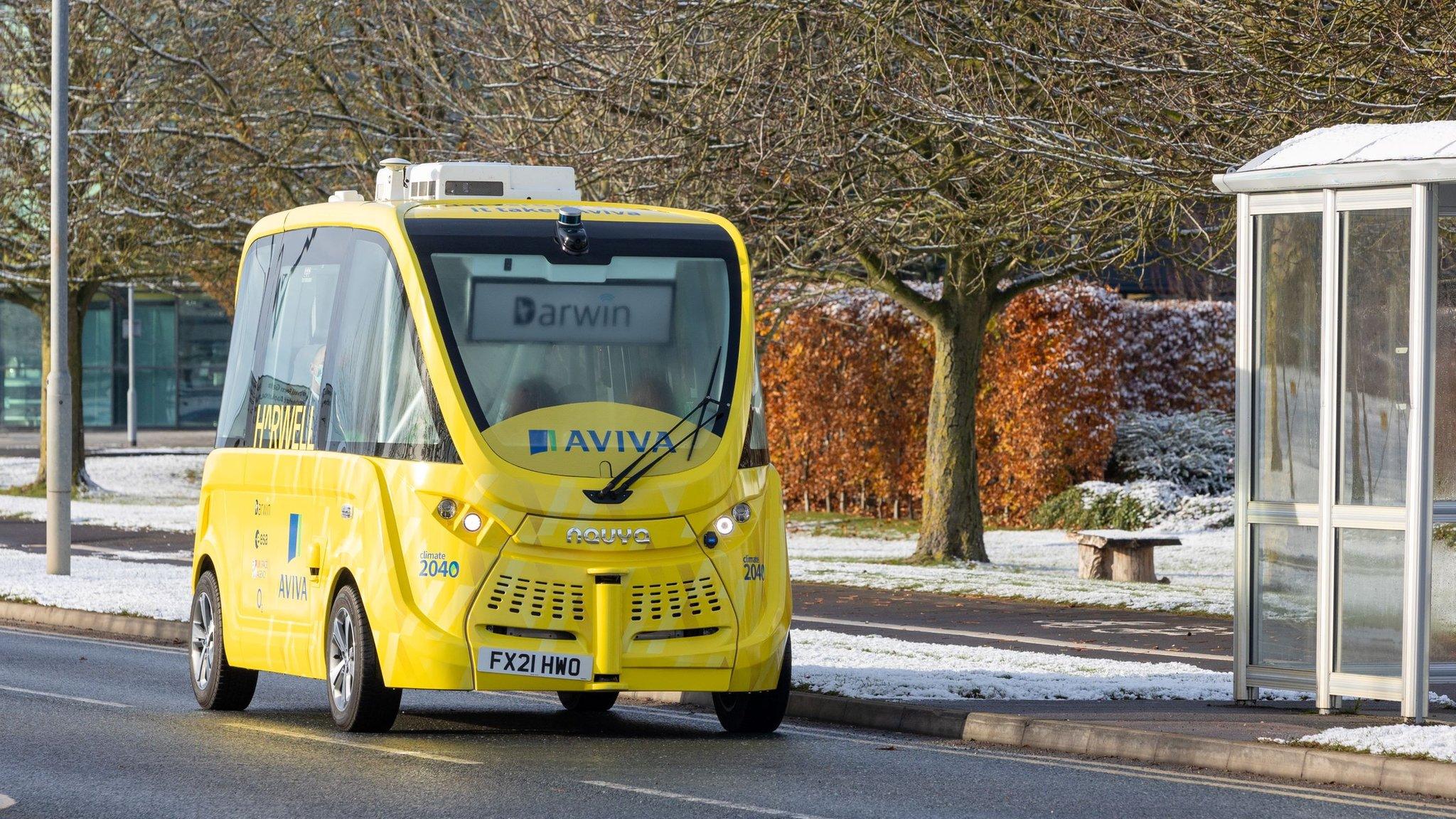Self-driving car stopped by San Francisco police
- Published

Cruise has been developing autonomous-driving technology
San Francisco police officers were faced with a new challenge after stopping an autonomous vehicle with no-one inside.
Officers approached the car, operated by Cruise, because it had been driving without headlights.
In the incident, captured on film, an officer remarks that there "ain't nobody in it" before the car moves to what Cruise said was a safer location.
The company said the headlights issue was a result of human error.
Allow Instagram content?
This article contains content provided by Instagram. We ask for your permission before anything is loaded, as they may be using cookies and other technologies. You may want to read Meta’s Instagram cookie policy, external and privacy policy, external before accepting. To view this content choose ‘accept and continue’.
Cruise, which is owned by General Motors and develops self-driving technology, has been testing autonomous vehicles (AVs) in the US.
Earlier this year it started allowing members of the public who join a waiting list to hail free night-time rides.
Cruise tweeted: "Our AV yielded to the police vehicle, then pulled over to the nearest safe location, as intended. An officer contacted Cruise personnel and no citation was issued."
Allow X content?
This article contains content provided by X. We ask for your permission before anything is loaded, as they may be using cookies and other technologies. You may want to read X’s cookie policy, external and privacy policy, external before accepting. To view this content choose ‘accept and continue’.
The company has produced a YouTube video, external for law-enforcement and other "first responders", setting out how they should interact with AVs.
It says in the video that the vehicles have microphones that can identify the sounds of sirens.
The "AV can detect lights and sirens so it will come to a stop".
The video explains that officers should call a dedicated phone number to reach the company's "escalation team" before approaching a vehicle.
"For example, the escalation team can do a number of tasks remotely, including unlocking the vehicle... and ensuring that the vehicle remains in a safe stationary position."
Legal challenges
The law commissions for England and Wales and the Scottish Law Commission have called for legal changes to deal with self-driving vehicles.
The independent bodies, which monitor and review UK legislation, recommended that if anything goes wrong, the company behind the autonomous driving system would be responsible, rather than the driver.
Driverless car glitches have inevitably cropped up as the technology develops - including the experience of people living in a quiet San Francisco street, who were deluged with an influx of self-driving vehicles.
Other car giants, including Elon Musk's electronic car company Tesla, are working on their own driverless technology.
Related topics
- Published26 January 2022

- Published30 November 2021

- Published17 May 2021
